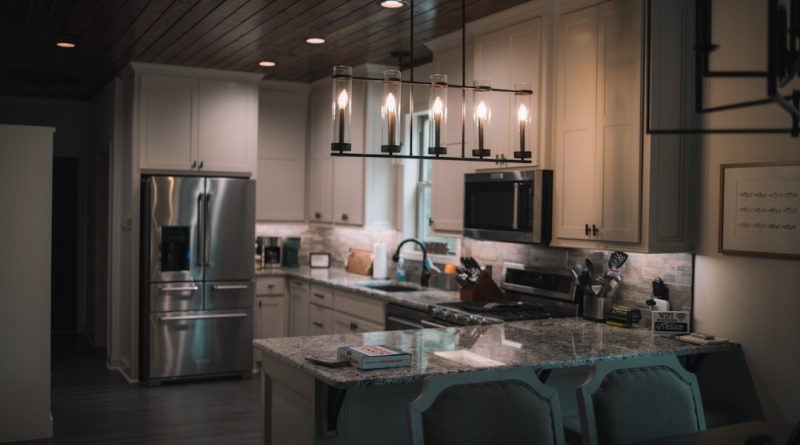Illuminate Your Space with an Indoor Pendant Lamp
Indoor pendant lamps are versatile lighting fixtures that hang from the ceiling, typically suspended by a cord, chain, or rod. They serve both functional and aesthetic purposes, illuminating spaces while also acting as decorative elements. The design of pendant lamps can vary widely, from minimalist and modern to ornate and vintage, making them suitable for various interior styles.
Their ability to provide focused light makes them ideal for specific areas such as dining tables, kitchen islands, or reading nooks. The history of pendant lighting can be traced back to the early 19th century when gas lamps were commonly used. As electric lighting became more prevalent, pendant lamps evolved in design and functionality.
Today, they are available in a plethora of materials, including glass, metal, and fabric, each contributing to the overall ambiance of a room. The height at which a pendant lamp is hung can also significantly impact the atmosphere; lower-hanging fixtures create intimacy, while higher placements can open up a space.
Choosing the Right Pendant Lamp for Your Space
Selecting the appropriate pendant lamp Rolkee for your space involves considering several factors, including the size of the room, the height of the ceiling, and the intended use of the light. For instance, in a dining area with a high ceiling, a larger pendant lamp or a cluster of smaller ones can create a striking focal point. Conversely, in a compact kitchen or hallway, a smaller pendant may be more suitable to avoid overwhelming the space.
The scale of the lamp should harmonize with the dimensions of the room to ensure a balanced aesthetic. Another critical aspect to consider is the style of the pendant lamp. A contemporary space may benefit from sleek, geometric designs made from metals or glass, while a rustic setting might call for fixtures crafted from wood or wrought iron.
Additionally, the color scheme of the room should guide your choice; a bold-colored lamp can serve as an accent piece in a neutral space, while a more subdued design can blend seamlessly into a colorful environment. It’s essential to envision how the lamp will interact with existing decor elements to achieve a cohesive look.
Installation and Safety Tips for Indoor Pendant Lamps
Installing an indoor pendant lamp requires careful planning and adherence to safety protocols. Before beginning the installation process, it is crucial to turn off the power at the circuit breaker to prevent any electrical accidents. If you are not comfortable working with electrical wiring, it is advisable to hire a licensed electrician to ensure that the installation is done correctly and safely.
Proper installation not only guarantees functionality but also minimizes risks associated with faulty wiring. When hanging a pendant lamp, consider its height in relation to the surrounding furniture and space. A general guideline is to hang pendant lights approximately 30 to 36 inches above a dining table or kitchen island.
This height allows for adequate illumination while ensuring that the fixture does not obstruct views or create an uncomfortable atmosphere. Additionally, if multiple pendants are used in a row, maintaining equal spacing between them will enhance visual appeal and symmetry.
Styling and Positioning Your Pendant Lamp
The styling and positioning of your pendant lamp can dramatically influence the overall ambiance of a room. When placing a pendant lamp over a dining table, it’s essential to consider not only its height but also its design in relation to the table’s shape and size. For instance, a round table may be complemented by a spherical pendant, while a rectangular table could benefit from linear or elongated fixtures that echo its shape.
Layering different types of lighting—such as combining pendant lamps with wall sconces or recessed lighting—can create depth and interest in your space. In addition to dining areas, pendant lamps can be effectively used in various other settings. In living rooms, they can serve as statement pieces above coffee tables or seating areas, providing both illumination and style.
In kitchens, pendant lights can be arranged in clusters above islands or countertops to create an inviting atmosphere for cooking and socializing. When styling your pendant lamp, consider incorporating decorative elements such as plants or artwork nearby to enhance its visual impact and create a cohesive design narrative.
Maintenance and Cleaning of Indoor Pendant Lamps
Maintaining indoor pendant lamps is essential for preserving their appearance and functionality over time. Regular cleaning helps prevent dust accumulation and ensures that light fixtures continue to emit bright, clear light. The cleaning process may vary depending on the materials used in the lamp’s construction.
For glass or crystal pendants, using a soft cloth with mild soap and water can effectively remove grime without scratching the surface. It’s important to avoid harsh chemicals that could damage delicate finishes. For metal fixtures, dusting with a microfiber cloth is often sufficient; however, if there are stubborn stains or tarnishing, specialized metal cleaners may be required.
When cleaning pendant lamps, always ensure that they are turned off and cool to the touch to avoid any risk of electric shock or burns. Additionally, periodically check for loose bulbs or connections; replacing burnt-out bulbs promptly not only maintains brightness but also prevents potential electrical issues.
Energy Efficiency and Cost Considerations
Advantages of LED Bulbs
With advancements in lighting technology, options such as LED bulbs have become popular due to their longevity and reduced energy consumption compared to traditional incandescent bulbs. LED bulbs can last up to 25 times longer than incandescent options while using significantly less electricity, making them an environmentally friendly choice that can lead to substantial savings on energy bills over time.
Cost Considerations for Pendant Lamps
When evaluating cost considerations for pendant lamps, it’s essential to factor in both initial purchase price and long-term operating costs. While some designer fixtures may come with a higher upfront cost, their durability and energy efficiency can make them more economical in the long run.
Dimming Options for Versatility and Energy Savings
Additionally, consider whether you want dimmable options; these can enhance versatility by allowing you to adjust brightness levels according to different activities or moods while also contributing to energy savings.
Customizing Your Indoor Pendant Lamp
Customization offers an exciting opportunity to personalize your indoor pendant lamp according to your unique style and preferences. Many manufacturers provide options for selecting different finishes, colors, and materials that allow you to tailor a fixture specifically for your space. For instance, if you have a modern kitchen with stainless steel appliances, opting for a brushed nickel finish on your pendant lamp can create visual harmony throughout the room.
Beyond finishes and colors, some homeowners choose to customize their pendant lamps by incorporating unique shades or decorative elements. This could involve adding fabric shades in patterns that complement existing decor or even creating DIY projects that transform standard fixtures into one-of-a-kind pieces. Customization not only enhances aesthetic appeal but also allows you to express your personality through your lighting choices.
Trendy Designs and Styles for Indoor Pendant Lamps
The world of indoor pendant lamps is constantly evolving, with new trends emerging that reflect contemporary tastes and lifestyles. One popular trend is the use of industrial-style pendant lamps characterized by raw materials such as exposed bulbs, metal shades, and minimalist designs. These fixtures often evoke a sense of urban sophistication and work well in loft-style apartments or modern homes.
Another trend gaining traction is the incorporation of natural materials into pendant lamp designs. Fixtures made from wood, rattan, or bamboo bring warmth and texture into spaces while promoting sustainability. These organic designs are particularly appealing in homes that emphasize eco-friendly practices or rustic aesthetics.
Additionally, bold colors and geometric shapes are making waves in modern interior design; vibrant hues can serve as eye-catching focal points that energize a room while unique shapes add an element of surprise. In conclusion, indoor pendant lamps are not just functional lighting solutions; they are integral components of interior design that can enhance both aesthetics and ambiance in any space. By understanding their history and functionality, choosing wisely based on style and size considerations, ensuring safe installation practices, maintaining them properly, evaluating energy efficiency options, customizing designs according to personal taste, and staying abreast of current trends, homeowners can make informed decisions that elevate their living environments significantly.


